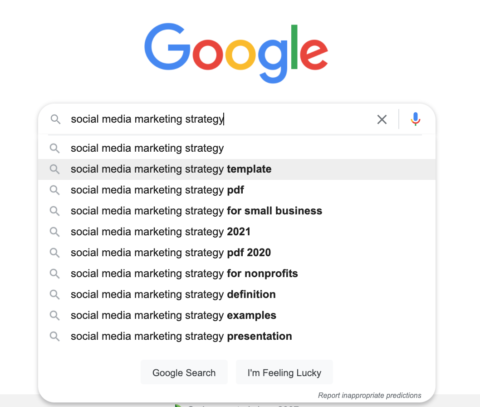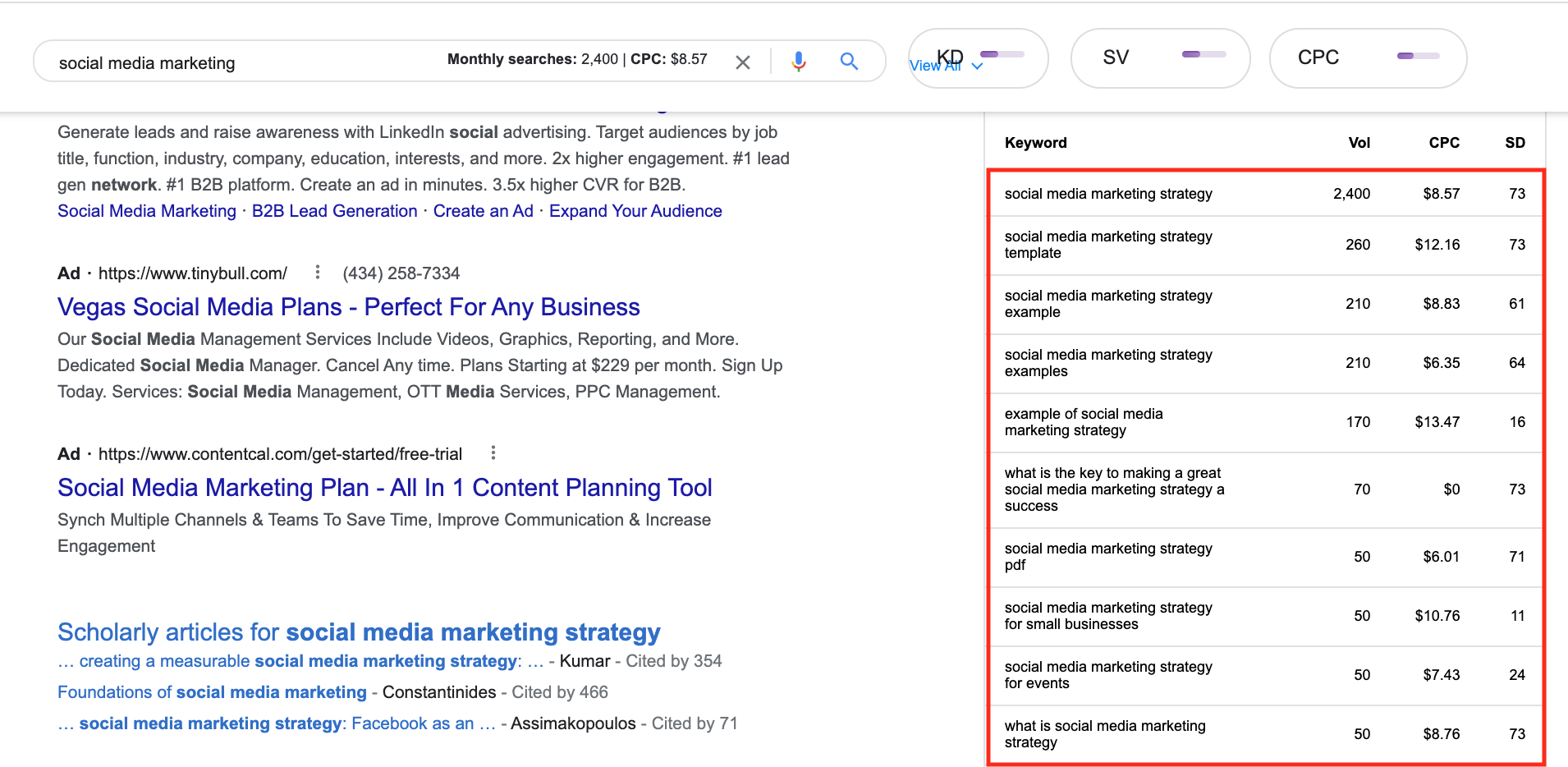If you want to show Google that your webpages are both relevant to specific keywords and more authoritative than your competitors, topic clusters are one of the best ways to do it.
That’s because Google no longer just looks for keywords on webpages when determining rankings.
It looks for synonyms, subtopics, and even answers to common questions that users have when researching your industry.
As a result, topic clusters are becoming a bigger part of many SEO professionals’ content strategies. They show Google that your website has industry expertise and features a breadth of useful, in-depth content about key topics in your industry.
Although building topic clusters on your website takes time, it can help you display topical authority in the eyes of Google and users, increasing total keyword rankings and driving more organic traffic in the long term.
What Are Topic Clusters?
A topic cluster (or content cluster) is a group of content assets on a website that are all centered on a related topic.
Topic cluster content explores a broader subject with more detail, nuance, and specificity.
As a unit, a topic cluster works to answer all of the questions users may have about a specific subject area in your industry niche.
Every topic cluster is built around a piece of pillar content (or a pillar page). Pillar pages are focused on broader subject areas and tend to target general industry keywords with higher search volume.
The accompanying cluster content explores subtopics or common questions and will usually target less popular (and less competitive) keywords that have a semantic relationship with the primary topic.
Let’s look at a more specific example. Say your company offers resume templates and writing services. One of your pillar content pieces could be optimized for the keyword “resume writing services” (12,000/month).
Under the long-form pillar content, you would have content that targets longer-tail, but related keywords like:
- “executive resume writing service” (900/month).
- “professional cv writing service” (250/month).
- “help with my resume” (200/month).
In terms of subject matter, these pieces still fall under the larger umbrella of “resume writing services,” but they are more narrow in focus.
For example, one is focused on the type of resume (i.e., “CV”) and another the type of applicant (i.e., “executives”).
The number of topic clusters on a website will be determined by the total products or services the brand offers.
This same resume business could create another content cluster around the larger topic of “resume templates” (188,000/month).
Why Embrace A Content Cluster Strategy?
So why is topic clustering an ideal long-term strategy to gain search rankings for broad, overarching keywords?
Well, most websites starting out have lower Domain Authority and just can’t rank for more competitive keyword phrases, even if their content is high-quality.
So topic clusters can help you rank for less competitive keywords and start driving traffic in the short term. Once you build your site authority, you can rank for bigger and better keywords.
The SEO goals of topic clusters are threefold:
- Gain search traffic for long-tail, lower search volume keywords through cluster content.
- Elevate the performance of the pillar content for more competitive keywords.
- Build credibility in specific topic areas so Google sees your site as an industry expert.
How Topic Clusters Help Google Understand Your Site
Not only do topic clusters help Google see your site as authoritative in specific subject areas, it helps Google understand the hierarchy of your website and how your content interrelates.
The reality is, most brands have more than one area of expertise. Thinking about developing your website around these key subject areas (instead of just single keywords) is a great way to start thinking about topic clustering.
Let’s look at a website for an HR software product.
 Screenshot from Paycor.com, October 2021
Screenshot from Paycor.com, October 2021Above is an example of a page that is targeting a high-value keyword: recruiting software.
 Screenshots from Ahrefs, October 2021
Screenshots from Ahrefs, October 2021Most likely, this brand’s ultimate goal with their pillar content is to earn page 1 rankings for this high-value, high search volume, general industry keyword.
As a result, their pillar content provides a comprehensive, in-depth overview about their recruiting software product and answers the most common questions users have.
The supporting cluster content explores related ideas or subtopics in recruiting with more detail and nuance. Here is some of the blog content that is strengthening the “recruiting” topic cluster.
 Screenshot from Paycor.com, October 2021
Screenshot from Paycor.com, October 2021Because of all the content centered on recruiting, Google knows that this particular website has topical authority in this area.
And because the content all links back to the main “recruiting software,” page, Google knows that of all the pages in this cluster, the pillar page is the most important.
How To Build A Topic Cluster
So how do you map out your topic clusters?
Start with the pillar content and build from there.
For example, let’s say you run a social media agency. You might have a pillar page that targets the keyword “social media marketing strategy” (SV 1800, CPC $15) and provides a high-level overview of this topic.
To start mapping out your cluster, you’ll need to do some additional keyword research.
Explore Autocompletes
The most basic way to get ideas for your topic cluster is to go to the Google search bar and see what else people are searching for in relation to your pillar content.
 Screenshot from search for [social media marketing strategy], October 2021
Screenshot from search for [social media marketing strategy], October 2021Or Use Your Favorite Keyword Tool
Most keyword tools make it easy to find related keywords, questions, or autocompletes and discover potential target keywords for your cluster content.
 Screenshots from Ahrefs, October 2021
Screenshots from Ahrefs, October 2021 Screenshot from Ubersuggest, October 2021
Screenshot from Ubersuggest, October 2021Keyword tools can help you be more strategic about what type of content is actually worth adding to your cluster.
Because even though your cluster content targets will likely have lower search volume, they should still be meaningful enough to drive some traffic to your site.
They should also have strong search intent and some conversion potential.
From these two small examples, we can identify some target keywords to help us build out our cluster:
- “social media marketing strategy for small business” (50/month).
- “social media marketing strategy examples” (50/month).
- “facebook social media marketing strategy” (20/month).
- “b2b social media marketing strategy” (20/month).
So, in this scenario, mapping out your topic cluster could look something like this:
- Pillar Page: How to Develop a Winning Social Media Marketing Strategy (SV 1.8K, KD 81)
– > A Guide to Social Media Marketing Strategy for Small Business (SV 50, KD 63)
– > 15 Examples of Social Media Marketing Strategy in 2021 (SV 50, KD 55)
– > B2B Social Media Marketing Strategy Tips (SV 20, KD 28)
The topic cluster should be guided by the pillar content. Smaller search volumes, less competition, but related search intent, are ideal keyword targets for cluster content.
As you gain keyword rankings for these less competitive keywords with your cluster content, Google will start to see your brand as an authority in the larger topic area of social media marketing strategy.
Over time, Google will then start promoting the pillar pages that target those more popular and competitive keywords in your industry.
The Role of Internal Links in Topic Clusters
So after you create your pillar content and cluster content, what holds the topic cluster all together?
The answer: Internal links.
Your internal linking structure helps Google understand several things:
- Relevance.
- Relationship.
- Importance.
As you interlink your content, remember that the pillar content needs to remain at the top of the linking hierarchy.
This emphasizes to Google that of all the content in this cluster, the pillar page is the most important. Therefore, Google should promote that page more often.
While there may be some exceptions, it’s important to make sure your cluster content is not linking back to the pillar pages of other topic clusters.
This practice helps Google understand your site architecture and more effectively spreads PageRank throughout the topic cluster.
Again, the number of topic clusters you deploy on your website will ultimately be determined by the scope of your services and products.
As you build out your topic clusters, your website will eventually look something like this.
 Image courtesy of Linkgraph.io
Image courtesy of Linkgraph.ioRegardless of your industry, there are likely hundreds to thousands of ways that users are searching for products and services like yours in Google.
So even if your products or services are more limited, you can most likely build out multiple topic clusters on your website.
Topic Clusters & Keyword Cannibalization
When done correctly, topic clustering should increase the total number of keywords driving traffic to your website.
But when cluster content is not optimized correctly or is too similar in subject matter, it can result in keyword cannibalization.
This means that Google doesn’t understand which content in the clusters is the most relevant or important.
It’s possible that your pillar pages might start ranking for the keywords you targeted in your cluster content and vice versa.
So if you are noticing this result on your own website, take the following steps to attempt to resolve it:
- Check the content scores of the pages in a content tool. It’s possible your pillar page is more highly optimized for those long-tail keyword targets than you realized
- Review your titles/h1s. Make sure both are written in a way where the keyword target and subject is clear to Google
- Check your internal links: You might be sending too much PageRank to the cluster content rather than your pillar pages. Pillar pages should be linked to in places like the navigation menu or your site’s footer.
- Build links to the pillar page: Backlinks are also a key ranking signal to Google, so your off-site strategy should focus on building links to your key pillar pages
Understanding The Big Picture Of Topic Clusters
The topic cluster framework is an ambitious content strategy.
Ideally, it should be ongoing for as long as your website exists and until you finish answering every question users might have about your products, services, or industry.
If executed properly, your topic clusters will work together to be your most powerful SEO weapon.
In the long-term, Google will not only see specific pieces of content as relevant to industry keywords, but will see your entire website as a leading industry authority.
More Resources:
- 7 Steps to Drive More Conversions with a User-Focused Content Matrix
- A Complete Guide to Keyword Search Volume for SEO
- How to Do Keyword Research for SEO: The Ultimate Guide
Featured Image: Graphic Grid/Shutterstock





![[SEO, PPC & Attribution] Unlocking The Power Of Offline Marketing In A Digital World](https://www.searchenginejournal.com/wp-content/uploads/2025/03/sidebar1x-534.png)